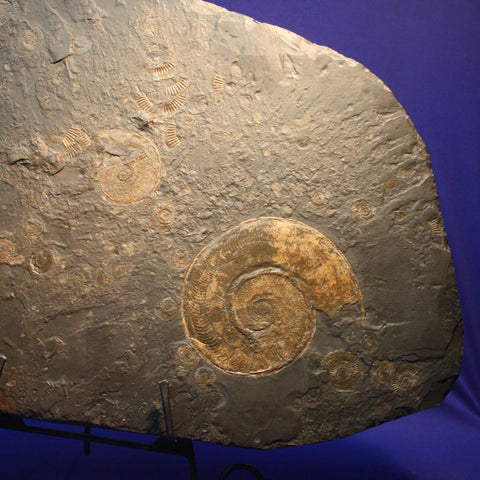Learn about Pyritized Fossils
The Beauty of Geochemistry
Pyrite or “Fools Gold” is an iron sulphide that occasionally - under unique geochemical conditions - covers or replaces prehistoric creatures and plants, transforming them into incredible fossils with a gold-like lustre.
Pyritized fossils tell us a lot about the past environments of our planet. Research indicates that prehistoric animals that become pyritized, such as trilobites and ammonites, were rapidly buried under ocean sediments that were low in organic matter. In this case there would not be a lot of decaying material present. Another important condition was anaerobic seawater – the water was low in dissolved oxygen.
For the trilobites with soft body parts, rapid burial meant there was very little decay of the creature before the fossilization process began. One of the final conditions for pyritization to occur is to have large numbers of sulphate reducing bacteria (they live in oxygen deficient water) and a high concentration of reactive iron. The bacteria change the sulphates into sulphides which can then diffuse with the iron into the trilobite or other organisms forming our spectacular fossils.
On fossilrealm.com we have a variety of gorgeous pyritized fossils including the incredibly rare Triarthrus trilobites with soft body preservation and the large Harpoceras ammonites from the Holzmaden quarry in Germany.

